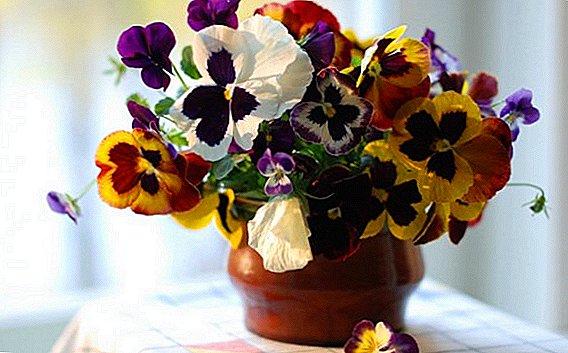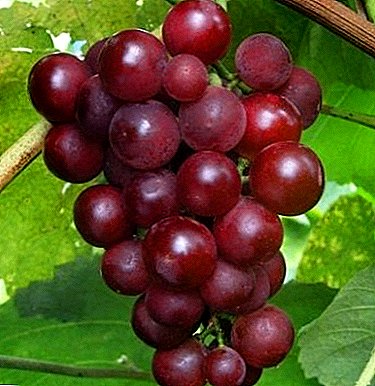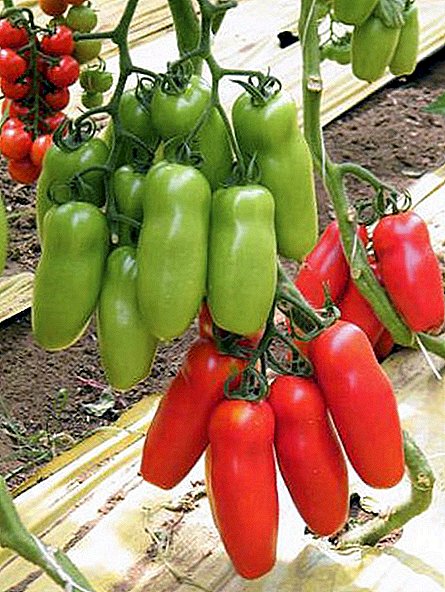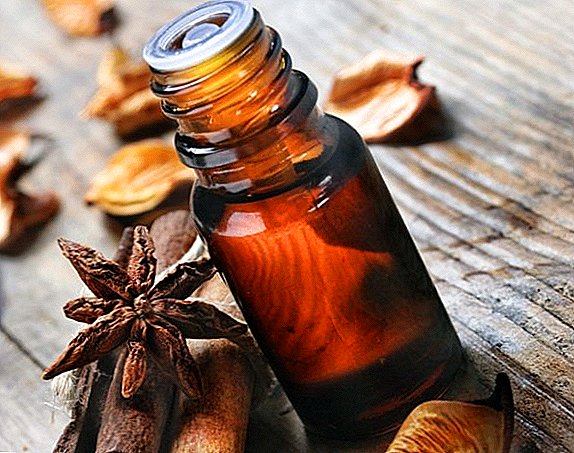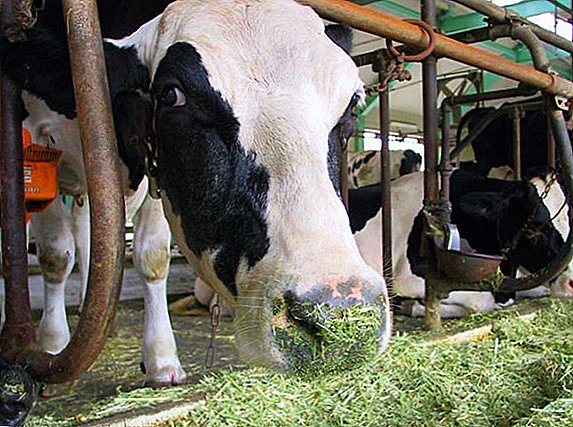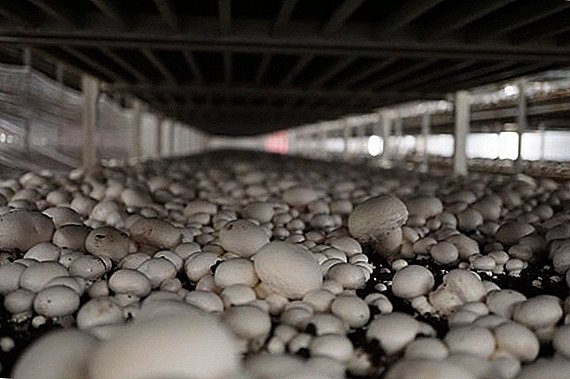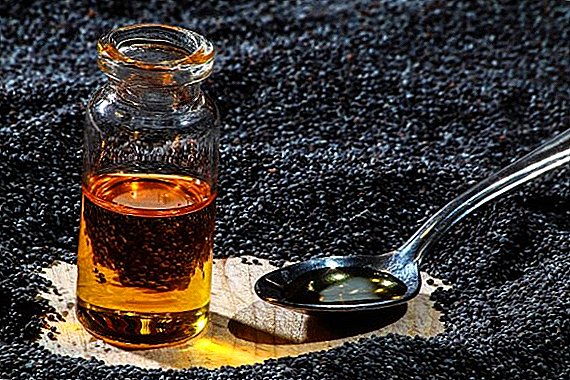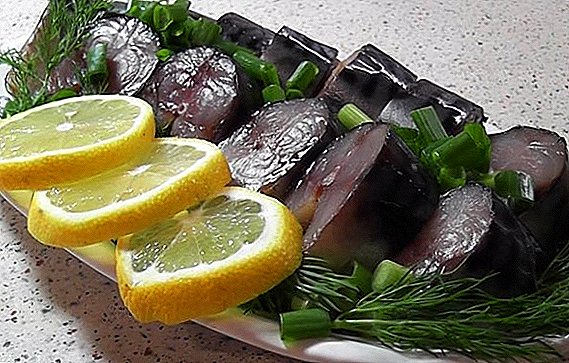 Preparing dried fish alone is not difficult - you just need to know how to do it properly at home. About how, according to the rules, to salt this delicacy, in order to fade it later, we'll tell you further.
Preparing dried fish alone is not difficult - you just need to know how to do it properly at home. About how, according to the rules, to salt this delicacy, in order to fade it later, we'll tell you further.
What fish can be dried at home
To wither the salted fish, suitable are those species whose meat will "ripen" during drying in the open air, acquiring a specific aroma and taste. So, the best in the dried form are the following inhabitants of the water depths:
- vobla,
- ram,
- bream,
- glue
- chehon
- carp,
- crawler
- asp,
- cyan,
- fish,
- ide,
- zander,
- ram,
- rudd
- podust
- dace,
- thicker
- perch,
- roach, etc.
We recommend you read about how to breed trout, grass carp and carp at home.
 Dried bream Here are some tips about what quality and size should be a fish, suitable for drying, as well as some other recommendations:
Dried bream Here are some tips about what quality and size should be a fish, suitable for drying, as well as some other recommendations:
- The fish should be medium fat and not large.
- It can fade as a whole, or as layers sliced along the vertebrae, or in pieces up to 100 grams.
- Usually, a small fish is salted and dried, not gutted, so that the fat that is under the skin and on the entrails soaks the whole fish, which makes it even tastier.
- It is best to cook small fish in the winter and spring, before spawning: during this period its meat is fatter and has better taste. An additional plus is that at that time there are still no flies that could put their larvae on a delicacy.
- If you decide to cook dried fish in the summer, then you can not leave it not gutted. Due to the fact that most fish that are suitable for curing, are herbivorous, the greens in their insides will decompose during cooking, so the meat will taste bitter and have a stale smell.
- Larger fish (1.5-2 kg) need to remove the insides and gills, regardless of the season. In the carcass, the abdomen is cut and an incision is made along the back.
- After removing the entrails, the fish meat is washed and cooked according to recipes, which we describe a little lower.

Definition of fish salting
In the preparation of dried product, three types of salting are used according to the amount of salt used:
- Lightly salted (or slightly salted) - up to 10%.
- Medium (medium salt) - 10-14%.
- Strong (strong-salted) - more than 14%.
Did you know? Before, people spent salt sparingly. The merchants living in Rybna (the old name of Rybinsk) and engaged in the fish trade, selling all the fish, were alloyed on barges Volga the remaining brine in the barrels back to Astrakhan. There it was further strengthened with salt, after which it was again suitable for use.
Salt fish after concentrated saline solution before consumption must be soaked:
- Cooling water, cooled tea brewing or a mixture of milk and cold water is used to soak the product of the middle layer.
- Fish more concentrated salting before it is served on the table, you need to soak, putting it in water with a temperature of 12 ° C to 15 ° C.
- Lightly salted usually cooked mackerel, fat herring and mackerel. They are not soaked before serving.

Salting options
There are several options for making salted fish at home. Each of them has its own characteristics. Now we will tell about each option separately.
Important! For salting fish, salt is used only coarse, without impurities and additives.
Dry ambassador
During this method of preparing a salty delicacy, the salt actively draws out juice from it, and the oppression squeezes it out additionally, so a copious amount of saline is formed. Best of all, a dry salted fish is obtained with a weight of more than 1 kg, which requires 200 g of salt for each kilogram of product.  Mandatory requirements for the preparation of dry salted product:
Mandatory requirements for the preparation of dry salted product:
- Salt is applied completely dry and large, before it dried in the oven.
- It takes a lot of weight to fully distribute the entire surface of fish carcasses and squeeze out all the air in them. If this is not achieved, rotting bacteria will develop in them.
- Only a flat wooden (lime or aspen), porcelain or stainless steel form can serve as a cargo circle.
Important! It is unacceptable to apply surface salting for fish under a load of plywood: poisonous glue will be released from it during wetting.
Step-by-step fish preparation with dry salting
This will require:
- 1 kg medium sized fish
- 200 grams of salt
- box made of wood with slots in the bottom,
- circle for oppression
- oppression,
- piece of polyethylene,
- piece of canvas.

The following actions:
- Wash carcasses thoroughly from mucus and allow water to drain.
- Cut them along the back along with the head and cut the bones of the ribs from the spine.
- Gently gut without catching the gallbladder with a knife.
- Soak up excess liquid from the meat with a piece of canvas.
- Rub in salt under the scales and sprinkle salt inside.
- At the bottom of the box pour salt in a layer of 2 cm and lay the fish layers in one row with the scales up.
- Larger fish is laid below, first.
- The carcass is unfolded like a book, with each layer being placed opposite to the previous one. This will allow the weight of the yoke to be evenly distributed over the surface of the batch of salting.
- Each new layer should be poured abundantly with salt.
- At the top of the last row put a circle with a yoke.
- Put the box in a cool place, having previously placed a suitable container under it for draining the separated brine through the holes.
- Cover the box with plastic to prevent dust and debris from getting there.
 We salt the fish in the box. A half pound of salt will be salted in three days, a kilogram - in 5 days, it will take at least two weeks for a larger fish.
We salt the fish in the box. A half pound of salt will be salted in three days, a kilogram - in 5 days, it will take at least two weeks for a larger fish.Wet ambassador
Some subtleties of cooking fish carcasses of wet salting:
- Salting do in circulating or irremovable brine (salt solution).
- The product turns out to be slightly salted. Next, it is used to prepare lightly salted dishes, smoked by smoking, canned or pickled.
- A significant disadvantage of this method of salting is that the initial concentration of the brine in the cooking process quickly decreases. If salt is added to the brine, it will not give the desired effect, because salt dissolves much more slowly than liquid is released from fish meat.
- Diffusion and stabilization of the salt concentration in the tank take place very slowly, so the process of the installation is long and uneven, which can lead to poor quality of the final product.

Cooking fish in a brine
You need to take the following ingredients:
- 10 kg of fish carcasses,
- 1 kg of salt
- 1 tbsp. spoon of sugar
- dishes that are not oxidized,
- wooden circle or plate of suitable size
- oppression.

Next steps:
- Wash the fish.
- Mix salt with sugar.
- Place the carcasses with the belly up, spreading it in layers in a container and pouring it with a mixture of sugar and salt.
- Put a circle on top and put a yoke on it.
- After 2-3 days, all carcasses should be covered with a bast.
- Prosol carcasses occur from the third to the tenth days (depending on the size of the fish), after which they are suitable for consumption.
Did you know? Salt, as a preservative, is mentioned in the New Testament. Jesus Christ compared the effects of the apostolic teaching on people with the way salt affects food, saying to the disciples: "You are the salt of the earth."
Some useful tips and features of the process:
- At first, it is necessary to ensure that the released brine does not overflow over the edge of the dish. This should be done until the juice is no longer abundantly stand out from the meat.
- Tuzluk with finished fish should be kept in a cold basement, closet or refrigerator.
- The suitability of the product with proper storage is 2-3 months.
- Before you use ready-made delicacy, it should be washed with water, then dried and removed for storage.
- Used brine is usually drained, but if it is light, it is additionally reinforced with the necessary amount of salt and reused.
Video: do-it-yourself fish preparation in brine
Drying
Dry fish preferably in dry weather, with an air temperature of 18-25 ° C, in a shade. During drying, salted fish gradually dried under the action of light, air and heat. When this happens a complex change in the structure of meat:
- Dehydration and compaction of meat fibers.
- Uniform distribution of fat in all tissues.
- Meat becomes amber and acquires a special, unique taste.
Dried fish is not just a tasty snack, but a real storehouse of nutrients. Read more about the recipe for curing fish at home.
Ingredients:
- 10 kg of fish,
- 1 kg of salt
- twine,
- utensils suitable for the volume (box, barrel, enamel saucepan, etc.),
- cargo cover
- cargo.

The preparatory process:
- Wash fresh fish carcasses thoroughly.
- For fish larger than 20 cm, remove the entrails, then cut them from the head to the end of the abdomen. Caviar and milt can be left.
- Thread the twine through the eyes and tie it to both ends.
- Rub each carcass with salt on all sides, and then lay out the bundles in layers in a suitable container, sprinkling the layers with salt.
- After that they need to stand for 8 hours.
- After the 8-hour period, cover the fish with a lid and press down with a load.
- After 3-7 days the salting process will end. Fish carcasses can be removed from the pickling vessel and rinsed under running water.
Important! Only salted fishes are suitable for drying, otherwise the delicacy will become rotten, not even having time to properly prepare.
How to dry the product:
- Dried out after washing the carcass from the brine should be moistened with vinegar and spread with vegetable oil to scare away the flies.
- Wrap each bundle in several layers of gauze - this will be a barrier to the laying of eggs by flies.
- To hang bundles with fish under a ventilated canopy.
- It should wilt from two to four weeks (the variation depends on the size of the fish and the surrounding temperature).
- Readiness of dried fish carcasses can be checked by bending the fish from the head to the tail. The "mature" fish should spring and straighten. If this happens, then the drying process is over, and it is ready for use.
Video: how to fish fish at home
Pickling
You can pickle any fish that you like. It is preferable to take the type of fish, where there are less bones, a lot of fat and meat is dense.
Consider the cooking of white carp.
There are two types of marinating - cold and hot. We will describe these methods below. And now - some tips on how to prepare the fish for marinating, and some subtleties of the process:
- Small fish can be marinated without dressing.
- It is necessary to carve large fish: clean them from scales, gut, separate tails and heads, cut into not very small pieces. Be sure to rinse well under running water.
- If the river fish is pickled, it can be soaked for 30 minutes in cold water with the addition of salt (1 tbsp per 1 l of water). This will relieve the product of the river smell.
- Be sure to strictly adhere to the prescription amount of vinegar, so that the pieces do not get sour.
- Spices also need to be added in moderation so that their taste does not dominate.
- In the process of marinating, the fish must be turned over periodically to evenly soak the marinade.
- The finished product is stored in a refrigerator in containers with well-closed lids. Marinade does not merge.
- You can keep pickled fish for 4 months.
Video: Pickled Fish Recipe Now we will step by step tell you how to make a delicacy cold and hot pickling.
Cold pickling
In this case, heat treatment does not apply. The fish is affected by a prepared mixture of spices and vinegar.
Required Products:
- 1 kg of prepared fish carcasses,
- 5 pieces of bulbs,
- 400 ml of vinegar (9%),
- 100 g of salt
- 200 grams of sugar
- 600 ml of water (boiled),
- 10 pieces of black peppercorns,
- 5 bay leaves,
- 1.5 teaspoons of dill seeds,
- 1.5 teaspoons of coriander seeds.

Cooking:
- Boil 200 ml of water with spices (pepper, coriander, dill) for 10 minutes.
- Pour salt, sugar, bay leaf and mix.
- Marinad to cool, then add the remaining cold water and vinegar.
- Cut the onions into rings.
- Cut the fish into pieces in a bowl with a lid, put onion on top and pour on the pickle.
- Cover and refrigerate.
- For pieces of pickling time - 3 days, for whole fish - 5 days.

Hot marinating
Hot marinating can be cooked boiled, steam, and also fried fish.
Products:
- 1 kg of fish
- 5 bulbs,
- 3 carrots,
- 400 ml of vinegar (9%),
- 3 tbsp. spoons of salt
- 4 tbsp. spoons of sugar
- 2 liters of boiled water,
- 10 sweet peas and 10 black pepper peas,
- 5 bay leaves,
- vegetable oil.

Step-by-step recipe:
- Fry the prepared fish pieces in oil.
- Boil the water and put the peeled onions and carrots in it. Boil 10 minutes on low heat.
- Add salt, sugar, vinegar, pepper and bay leaf. Boil another 5 minutes.
- Put the fried fish in glass jars with lids.
- Put onion sliced onions.
- Remove boiling marinade from the stove and pour it into jars with fish.
- Cover and allow to cool.
- Put the product in the refrigerator and insist 2 days.

Salmon salting of fresh fish
The most suitable for salmon salting are red fish species: chum salmon, trout, pink salmon and others. The most acceptable taste and price - keta.
Ingredients and tableware:
- 1 or 2 medium chum,
- 2 tbsp. spoons of coarse salt
- 1 tbsp. spoon of sugar
- ground black pepper and bay leaf - to taste,
- square dishes or a pan with high sides for salting chum salmon,
- capacious container with a lid,
- paper towels.

Cooking:
- Clean and rinse the chum.
- Remove excess moisture with a paper towel.
- Cut fish into 2 separate fillets and remove bones.
- Rinse again, let the water drain.
- Put each individual fillet on a baking sheet and sprinkle with a mixture of salt, sugar and pepper on both sides.
- Lay the prepared fillets in thick layers in a container with the skin up, shifting each layer with a bay leaf.
- Press down the fillet in the container with the load so that the pickle stands out.
- Cover the container and let stand in the refrigerator for 48 hours.
- After you get the container and swap fillet layers in places: top with bottom.
- Put back in the cold for a day.
- After 3 days salting each filet, put them in sachets and send them in the freezer for two weeks.
- At the end of a 2-week period, the fish is ready to eat.
Video: salmon salmon chum
Balyk ambassador
Balyk salted fish is considered a delicacy with high taste. From the balyk prepare snacks and ingredients for sandwiches. Usually use fleshy and fatty representatives of the underwater fauna: salmon, sturgeon, herring, halibut, sea bass.
You will be interested to know how to smoke fish.
Ingredients and Utensils:
- 1 average fish carcass,
- 10 art. spoons of coarse salt,
- 4 tbsp. spoons of sugar
- pepper, coriander, cinnamon - all in half a teaspoon,
- pallet,
- paper towels,
- piece of gauze,
- twine.

Cooking process:
- Wash the mucus under running water.
- Gut it, trim the head and tail.
- Cut off the abdominal part with a scissors, the so-called Tes-A (it will salt more quickly than the carcass, so it is prepared separately).
- Wipe the carcass dry.
- Mix the ingredients of the pickling mix and thickly distribute it under the scales, also generously falling asleep inside the carcass.
- Prepared fish wrap with gauze.
- Tie the carcass along the entire length of the string.
- Put in the bottom of the refrigerator on the pallet.
- The melted brine merges.
- Fish in the cold marinated for at least ten days.
- After a ten-day period, you need to release the carcass from the gauze, rinse and pat dry with a towel.
- Fish balyk can be stored for a long time in the cold, from time to time rubbing it with vegetable oil.
 Try to cook at home dried fish in one of the ways that we told you about. A little effort, with a week or two of expectations - and a delicacy will occupy an honorable place on your table.
Try to cook at home dried fish in one of the ways that we told you about. A little effort, with a week or two of expectations - and a delicacy will occupy an honorable place on your table.


